Continued Policy Mistakes in Brazil
By Win Thin
BRL is one of the worst EM performers today, and continues a string of underperformance (-10.8% vs. USD) that began with the unexpected 50 bp rate cut August 31. Since then, only HUF has done worse at -11.5%. It’s really a confluence of factors, but markets are clearly punishing Brazil for its continued efforts to weaken the currency, which have distorted markets there. Besides the countless FX measures, of which Friday’s was only the latest in a long line of poorly communicated policy shifts, we are now seeing even more distortions added into the economy with the imposition of import tariffs to help protect domestic manufacturers. Not only is this inefficient from pure trade theory, but it will also likely add to already high price pressures.
The weekly central bank survey shows continued deterioration in inflation expectations, with all measures creeping higher. A weaker BRL and higher import tariffs will end up injecting more inflation into the economy, and we can see this thing really going off the rails if inflation gets out of hand. Lower nominal yields plus higher inflation will not instill investor with confidence, and will most likely lead to higher borrowing costs for the government. Mid-September IPCA is due out tomorrow, and market is looking for an acceleration in the y/y rate to 7.29% from 7.1% in mid-August. This is well above the 2.5-6.5% target range.
Source: Bloomberg
We view the protectionist measures and FX measures as two sides of the same coin. The FX measures are meant to limit BRL gains, and the trade measures are meant to provide relief to industries that are being hurt by the strong BRL. Earlier this year, Brazil imposed trade barriers on auto parts imports and a variety of other products. Imports of 27 products face tighter licensing requirements that can take up to 60 days to approve. These are called non-tariff barriers to trade (NTBs) in trade theory. Now, Brazil has taken the next logical step and imposed tariffs outright. These developments are noteworthy, as protectionist policies were largely not seen during the depths of the financial crisis.
We remain puzzled as to why Brazil is taking such aggressive measures throughout the economy. Exports rose 36% y/y in August and remain robust, but only account for about 10% of GDP. IP is slowing, but retail sales also remain fairly robust. Unemployment was a low 6% in July, while wage pressures are set to rise even more with the big hike in minimum wage planned for 2012. We acknowledge that the economy is slowing, with Q3 data so far suggesting further slowing in GDP growth from 3.1% y/y in Q2. But with price pressures still elevated, we think the August easing was not justified. Markets are pricing in 125-150 bp of further easing by year-end from 12% currently, which suggests potential for 75 bp cuts at both the October and November meetings. This seems way too aggressive to us, especially if inflation and inflation expectations keep rising.
Source: Bloomberg
One thing to note for foreign investors is that despite BRL’s poor performance recently, there are really precious few alternatives in terms of yield. Take the example of Japan investors, who have been amongst the biggest players in BRL. Year-to-date, total return in yen terms for BRL currently stands at -6.9%. That sounds terrible, but there is no EM currency that has provided positive total return YTD for Japan investors. Best are IDR (flat), RON (-0.2%), and PEN (-0.4%). Most in EM are down big, with the worst being ZAR (-15.6%), TRY (-15.1%), PLN (-10.2%), and MXN (-9.6%). In G10, only NZD is up with a +1.3% YTD. Worst is USD (-5.6%), GBP (-5%), and SEK (-4.4%). AUD is down -2.5% but has done relatively well within G10.
Source: Bloomberg
Investor sentiment needs to be closely monitored. While we are not looking for a complete meltdown in Brazil assets, we do think BRL and BRL-denominated bonds are likely to underperform for now. Bovespa is outperforming since the August rate cut, and the prospect of further easing is likely to prove supportive of Brazil stocks. However, we think that negative fallout from euro zone developments is likely to keep a lid on Bovespa gains. For USD/BRL, our more pessimistic outlook on the euro zone and on deteriorating credibility of Brazil policy-makers lead us to target the May 2010 high around 1.9153 in Q4. That is within a generally bearish environment, with BRL forecast to underperform some of the stronger EM credits in the coming weeks.
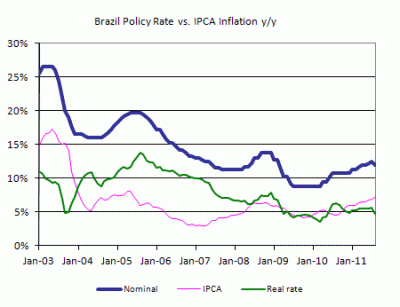
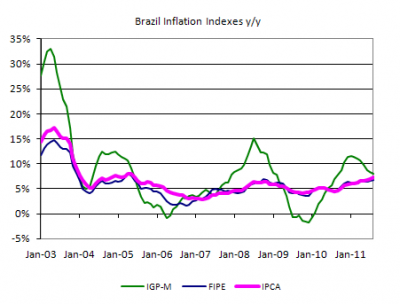
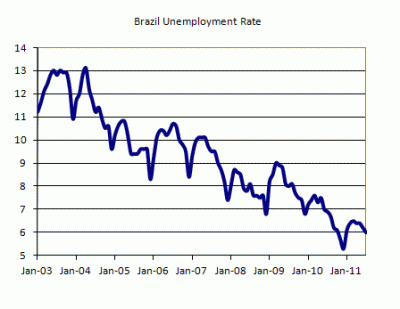
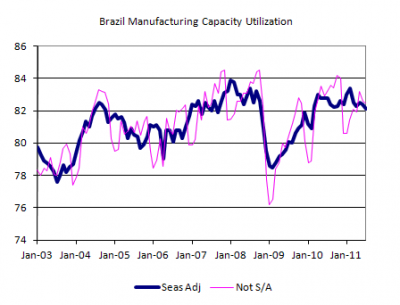
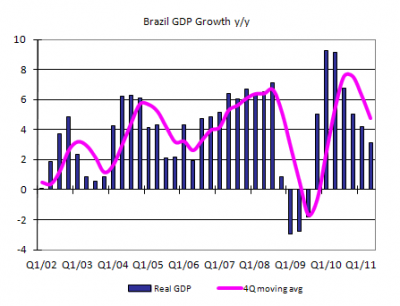
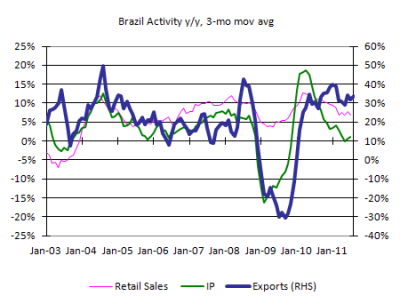
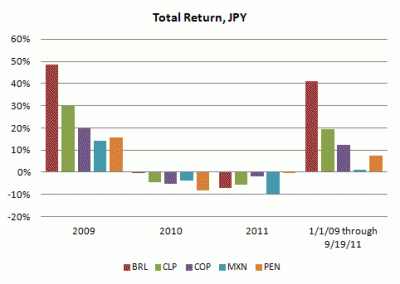
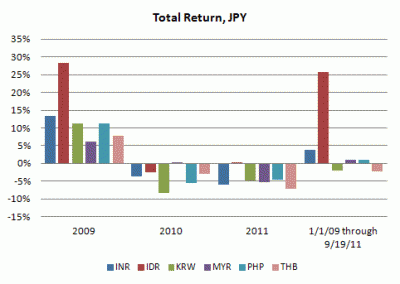
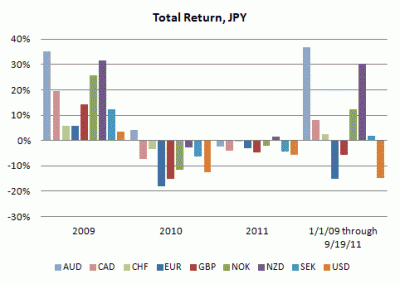
Comments are closed.